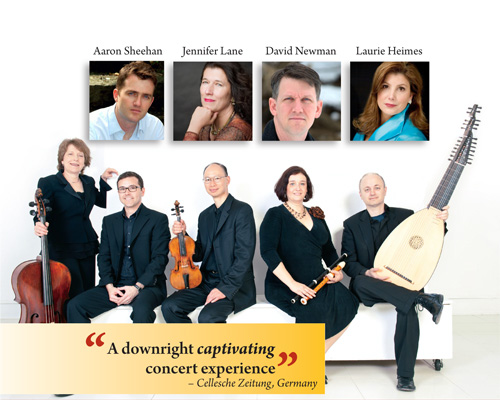The Tempesta di Mare Chamber Players, with vocal soloists Laura Heimes, soprano, Jennifer Lane, alto, Aaron Sheehan, tenor and David Newman, perform Art of the Prophets, glorious German vocal and instrumental music from the generation before J.S. Bach, on December 8 in Center City and December 9 in Chestnut Hill.
If you like the Pachelbel Canon,
you’ll love the music in
Art of the
Prophets.
|
– Art of the Prophets glorious German vocal and instrumental music
image credit: Andy Kahl, et al.
pre-concert talks by social historian Tanya Kevorkian Use tabs and links below for ticket and venue information.
Click to hear soundclip of another piece by Philipp Heinrich Erlebach: performed by Tempesta di Mare, October 2008. |
A new generation of composers emerged from the devastation following the Thirty Years War, redefining German music with ravishing results. Art of the Prophets showcases some of the finest examples of the era, with spiritual and secular music by Nicolaus Bruhns, Philipp Heinrich Erlebach, Johann Rosenmüller, and Johann Christoph Bach (J.S. Bach’s cousin). If you like the Pachelbel Canon, you’ll love the music by his contemporaries in Art of the Prophets.
A new generation of composers emerged from the devestation following the Thirty Years War, redefining German music with ravishing results
Social historian Tanya Kevorkian, author of Baroque Piety: Religion, Society, and Music in Leipzig, 1650–1750 and history professor at Millersville University, will give pre-concert talks on the reemergence of music and celebration in Germany after the Thirty Years War. Each talk will start one hour before the concert.
This program is supported in part by an ArtWorks Grant from the National Endowment for the Arts.

